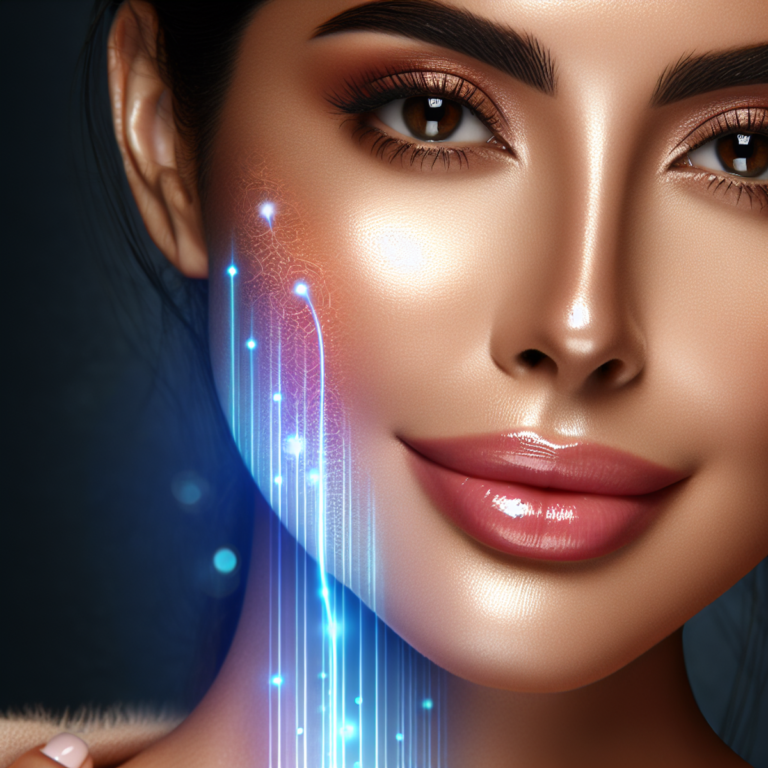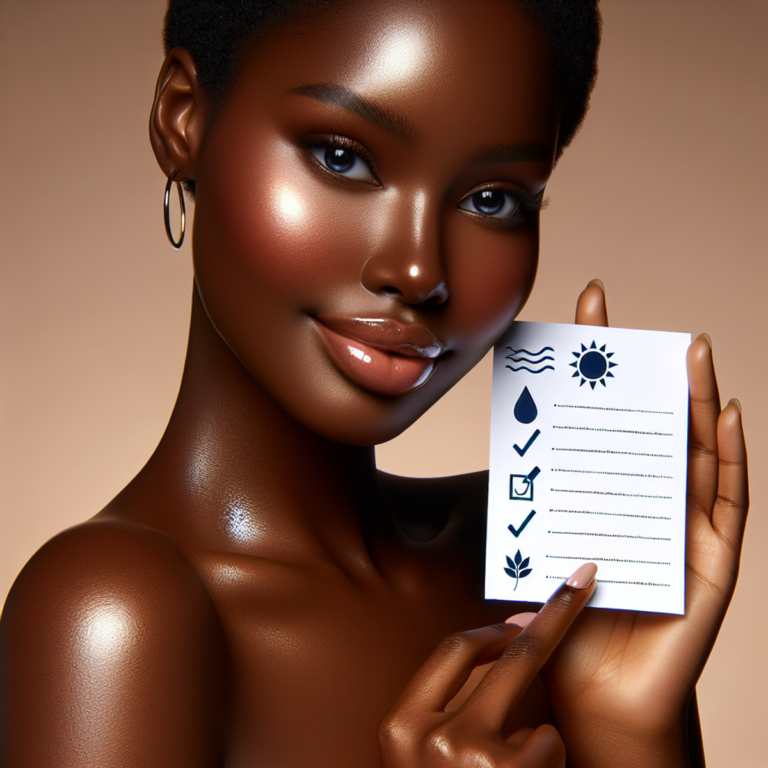How to avoid breakouts

Introduction
Dealing with breakouts can feel like an endless battle against your own skin. You’re not alone – millions face this frustrating challenge daily, searching for effective ways to prevent pimples and maintain clear, healthy skin.
This comprehensive guide will equip you with proven strategies to prevent breakouts before they start. You’ll discover practical, science-backed methods for:
- Creating an effective skincare routine that works for your skin type
- Identifying hidden triggers that cause breakouts
- Selecting the right products to keep your skin clear
- Making lifestyle adjustments that support skin health
- Understanding when to seek professional help
Whether you’re dealing with occasional pimples or persistent acne, you’ll find actionable steps to transform your skin care approach. From natural remedies to over-the-counter solutions, we’ll explore multiple paths to achieving clearer skin.
Ready to take control of your skin health? Let’s dive into understanding what causes breakouts and how you can prevent them effectively. This guide combines dermatological expertise with real-world solutions, helping you build a sustainable strategy for maintaining clear, healthy skin.
Understanding Breakouts
Breakouts can appear on your skin in different ways, each with its own unique features and causes. Let’s take a closer look at the common types of breakouts you might come across:
Types of Acne Lesions:
- Whiteheads: Closed pores clogged with oil and dead skin cells
- Blackheads: Open pores filled with oxidized debris, appearing dark
- Papules: Small, red, tender bumps
- Pustules: Pimples containing pus at their tips
- Nodules: Large, painful bumps deep under the skin
- Cysts: Deep, pus-filled lesions that can cause scarring
The Inflammation Connection
Your skin’s inflammatory response plays a crucial role in breakout development. When bacteria, excess oil, or dead skin cells trigger your immune system, it launches a defense mechanism resulting in:
- Redness
- Swelling
- Heat
- Pain
- Increased blood flow to affected areas
Key Triggers Behind Your Breakouts
Here are some common factors that can contribute to the development of breakouts:
- Hormonal FluctuationsMenstrual cycles
- Pregnancy
- Puberty
- Stress-induced hormonal changes
- Dietary FactorsHigh-glycemic foods
- Dairy products
- Processed foods
- Chocolate and greasy foods
- Environmental InfluencesHumidity
- Pollution
- UV exposure
- Climate changes
- Lifestyle ElementsSleep patterns
- Exercise habits
- Skincare routine
- Personal hygiene
Hidden Breakout Catalysts
Your daily habits might unknowingly contribute to breakouts:
- Touching your face frequently
- Using dirty pillowcases
- Wearing tight headbands or helmets
- Applying expired skincare products
- Using harsh cleansers
- Overwashing your face
Understanding these underlying causes helps you identify your specific triggers and develop targeted prevention strategies. Breakouts often result from a combination of these factors rather than a single cause, making a comprehensive approach to prevention essential.
Daily Skin Care Routine for Acne Prevention
A consistent skincare routine serves as your first line of defense against breakouts. Your daily regimen creates a protective barrier, maintains skin balance, and prevents the formation of new blemishes.
Morning Routine Essentials:
1. Gentle Cleansing
- Use lukewarm water – hot water strips natural oils
- Apply a sulfate-free cleanser with clean hands
- Massage in circular motions for 60 seconds
- Pat dry with a clean towel
2. Hydration
- Apply noncomedogenic moisturizer while skin is damp
- Look for ingredients like hyaluronic acid or ceramides
- Use light, gel-based formulas for oily skin
- Choose cream-based products for dry skin
Evening Routine Steps:
1. Double Cleansing
- Remove makeup with micellar water
- Follow with your regular cleanser
- Avoid harsh scrubbing or exfoliating tools
2. Treatment Application
- Apply spot treatments on active breakouts
- Use thin layers to prevent skin irritation
- Wait 2-3 minutes between product applications
Key Product Ingredients to Look For:
- Niacinamide for oil control
- Salicylic acid for gentle exfoliation
- Zinc for inflammation reduction
- Tea tree oil for natural antibacterial properties
Beard Care Tips for Men:
- Keep facial hair clean and well-maintained
- Use beard-specific cleansers
- Apply lightweight beard oils sparingly
- Clean grooming tools regularly
Natural Prevention Methods:
- Change pillowcases twice weekly
- Use clean face towels daily
- Keep hair away from face
- Avoid touching face throughout day
To achieve clearer skin, consider exploring natural methods which can complement your skincare routine effectively.
Your skin needs time to adjust to new products – introduce one product at a time and wait 2-3 weeks before adding another. This method helps identify which products work best for your skin type and prevents potential reactions from multiple new ingredients.
Remember to be gentle with your skin during cleansing and product application. Harsh treatments or aggressive scrubbing can trigger inflammation and lead to more breakouts. Listen to your skin’s needs and adjust accordingly.
In addition, if you’re struggling with specific issues like blackheads, you might find some useful insights in this article about removing blackheads.
Over-the-Counter Treatments for Acne Control
Your local pharmacy offers powerful weapons in the fight against breakouts. Understanding these treatments helps you make informed decisions for your skin care routine.
1. Benzoyl Peroxide
- Kills acne-causing bacteria
- Available in strengths from 2.5% to 10%
- Start with lower concentrations to minimize irritation
- Apply a thin layer to affected areas
- Can bleach fabrics – use white towels and pillowcases
2. Salicylic Acid
- Unclogs pores by dissolving dead skin cells
- Reduces inflammation and redness
- Typically available in 0.5% to 2% concentrations
- Works well for blackheads and whiteheads
- Can be found in cleansers, toners, and spot treatments
3. Glycolic Acid
- Removes dead skin cells
- Improves skin texture
- Helps other products penetrate better
- Available in concentrations from 5% to 10%
- Best used in the evening
Usage Tips for Maximum Benefits
- Start with one active ingredient
- Apply products on clean, dry skin
- Wait 2-3 minutes between applying different products
- Use sunscreen during the day
- Patch test new products on a small area first
Signs of Product Effectiveness
- Reduced inflammation within 24-48 hours
- Decreased oil production
- Smaller pore appearance
- Gradual improvement in skin texture
Warning Signs to Watch
- Excessive drying
- Redness or burning sensation
- Peeling beyond mild exfoliation
- Increased sensitivity to sunlight
These treatments work best when used consistently as part of your skincare routine. If you experience persistent irritation, reduce usage frequency or concentration. Your skin needs time to adjust to active ingredients – patience and consistency yield the best results.
Makeup and Hair Care Considerations During Breakouts
Your makeup and hair care choices play a crucial role in managing breakouts. While it’s best to let your skin breathe during active breakouts, you might need to wear makeup for work or special occasions.
Safe Makeup Options During Breakouts
- Choose water-based foundations labeled “oil-free” or “noncomedogenic”
- Opt for mineral-based powder products that allow skin to breathe
- Look for makeup containing salicylic acid or tea tree oil
- Use clean brushes and applicators for each makeup application
- Remove all makeup before bed with a gentle cleanser
Products to Avoid During Active Breakouts
- Heavy, cream-based foundations
- Shimmer or glitter products that can irritate skin
- Expired makeup products that harbor bacteria
- Shared makeup products or testers
- Waterproof makeup that requires harsh removal methods
Hair Products and Your Skin
Your hair care routine can significantly impact your skin’s health. Hair products often contain ingredients that clog pores and trigger breakouts, particularly along your hairline, forehead, and cheeks.
Tips for Hair Care When Prone to Breakouts
- Keep hair clean and away from your face
- Use sulfate-free shampoos and conditioners
- Apply styling products away from your hairline
- Wash pillowcases frequently to remove hair product residue
- Consider switching to fragrance-free hair products
Signs Your Hair Products Are Causing Breakouts
- Breakouts concentrated along the hairline
- Acne that appears after using new hair products
- Forehead acne that doesn’t respond to typical treatments
- Breakouts that worsen after hair washing or styling
When selecting new hair products, patch test them on a small area of skin for 24-48 hours. This practice helps identify potential irritants before they cause widespread breakouts. For styling, try to keep hair products at least one inch away from your scalp and hairline to minimize skin contact.
Remember to wash your hands after applying hair products and before touching your face. This simple habit prevents the transfer of potentially pore-clogging ingredients from your hair to your skin.
Lifestyle Changes to Support Clear Skin
Your daily habits play a crucial role in maintaining clear, healthy skin. Making strategic lifestyle adjustments can significantly reduce breakout frequency and severity.
Diet’s Impact on Skin Health
What you eat can have a direct impact on your skin health. Here are some dietary changes you can make to support clearer skin:
Foods That Can Trigger Breakouts:
- High-glycemic foods (white bread, sugary snacks)
- Dairy products, especially skim milk
- Processed foods with artificial additives
- Foods high in saturated fats
- Chocolate and greasy foods
Skin-Supporting Foods:
- Omega-3 rich fish (salmon, mackerel)
- Leafy greens (spinach, kale)
- Antioxidant-rich berries
- Nuts and seeds
- Green tea
- Foods high in zinc (pumpkin seeds, legumes)
Hydration Tips:
- Drink 8-10 glasses of water daily
- Limit alcohol consumption
- Reduce caffeine intake
Exercise Benefits for Skin Health
Regular physical activity not only benefits your overall health but also contributes to healthier skin. Here’s how exercise can help:
Direct Benefits:
- Increased blood circulation
- Enhanced oxygen delivery to skin cells
- Improved toxin removal through sweating
- Reduced stress hormones
- Better hormone regulation
Post-Workout Skin Care:
- Remove sweaty clothes immediately
- Shower within 30 minutes of exercise
- Use gentle, non-comedogenic body wash
- Pat skin dry with clean towel
- Apply lightweight, oil-free moisturizer
Targeted Exercise Tips for Problem Areas:
- Back acne: Wear loose-fitting, breathable workout clothes
- Body breakouts: Choose moisture-wicking fabrics
- Forehead acne: Keep hair tied back during workouts
- Face breakouts: Avoid touching face while exercising
Creating a balanced lifestyle that includes proper nutrition and regular exercise helps prevent breakouts across your entire body. Track your food intake and exercise routine to identify patterns that might trigger skin issues. Remember to maintain consistent habits – your skin responds best to steady, long-term lifestyle changes rather than short-term fixes.
Managing Stress for Acne Prevention
Your skin reflects your stress levels. Research shows a direct link between increased stress and more acne breakouts. When you’re stressed, your body produces extra cortisol and other hormones that trigger your oil glands, causing clogged pores and inflammation.
The Stress-Acne Connection:
- Increased oil production
- Slower wound healing
- Compromised skin barrier function
- Higher inflammation levels
- Disrupted sleep patterns affecting skin repair
Effective Stress Management Techniques for Clear Skin:
1. Mindful Breathing
- Practice 4-7-8 breathing: Inhale for 4 counts, hold for 7, exhale for 8
- Set aside 5-10 minutes daily for deep breathing exercises
2. Physical Release
- Gentle stretching
- Progressive muscle relaxation
- Regular walks in nature
3. Mental Wellness Activities
- Journaling negative thoughts
- Creating daily gratitude lists
- Setting realistic goals and boundaries
Sleep Optimization Tips:
- Maintain a consistent sleep schedule
- Create a relaxing bedtime routine
- Keep your bedroom cool and dark
- Avoid screens 1 hour before bed
Quick Stress-Relief Methods:
- Take short breaks during work
- Listen to calming music
- Practice mini-meditation sessions
- Use aromatherapy with lavender or chamomile
Creating a stress management routine helps prevent stress-induced breakouts. Start with one technique and gradually incorporate others into your daily routine. Track your stress levels alongside your skin condition to identify patterns and adjust your management strategies accordingly.
Remember to be patient with your skin during stressful periods. Incorporating these stress-reduction techniques alongside your skincare routine creates a holistic approach to maintaining clear, healthy skin.
Protecting Your Skin from External Factors That Cause Breakouts
Your skin is constantly exposed to environmental factors that can trigger breakouts. One of the main culprits is sun exposure, which can lead to post-acne scarring and dark spots. That’s why it’s crucial to protect your skin properly to maintain its clarity.
Choosing the Right Sunscreen
When it comes to sunscreen, not all products are created equal. Here are some key things to look for when choosing a sunscreen that won’t aggravate your acne:
- Look for broad-spectrum protection (UVA/UVB) to shield your skin from both types of harmful rays.
- Select products labeled “noncomedogenic,” meaning they won’t clog your pores.
- Opt for SPF 30 or higher for adequate sun protection.
- Consider mineral-based options with zinc oxide or titanium dioxide, as they tend to be gentler on acne-prone skin.
Application Tips for Acne-Prone Skin
Applying sunscreen correctly is just as important as choosing the right product. Follow these tips to ensure you’re getting the most out of your sunscreen:
- Apply sunscreen 15-20 minutes before sun exposure to allow it to absorb into your skin.
- Reapply every 2 hours, or more frequently if you’re sweating or swimming.
- Use a quarter-sized amount for face coverage, and don’t forget areas like your ears and neck.
- Instead of rubbing the sunscreen in, pat gently to avoid irritating your skin.
Environmental Protection Strategies
In addition to sunscreen, there are other ways you can protect your skin from environmental aggressors:
- Wear wide-brimmed hats when spending time outdoors to shield your face from direct sunlight.
- Use protective clothing such as long sleeves and pants if you’ll be exposed to the sun for extended periods.
- Keep your face clean after sweating by washing it with a gentle cleanser.
- Incorporate antioxidant serums into your skincare routine to combat damage caused by pollutants.
Specific Area Protection
Certain areas of your face may require extra attention when it comes to preventing breakouts:
- Forehead: Be mindful of hair products that may come into contact with your hairline and cause breakouts. Avoid using heavy oils or styling gels directly on this area.
- Chin: Try not to touch or rest your hands on your chin throughout the day, as this can transfer bacteria and oil onto your skin.
- Cheeks: Regularly clean your phone screens with disinfectant wipes, especially if you frequently use it while resting it against your cheek.
- T-zone: Keep oiliness at bay by using oil-blotting papers during the day to absorb excess shine without disturbing your makeup.
Period-Related Breakout Prevention
Hormonal changes during menstruation can often lead to breakouts. Here are some strategies you can implement during this time:
- Track your menstrual cycle using apps or calendars so you can anticipate when hormonal fluctuations may occur.
- Increase water intake during menstruation to help flush out toxins and reduce bloating, which can contribute to breakouts.
- Use gentle cleansers that won’t strip away moisture from your skin but still effectively remove dirt and impurities during this period.
- Consider incorporating clay masks into your routine before expected breakouts
Seeking Professional Help When Necessary
Your persistent acne might require professional intervention when over-the-counter treatments aren’t delivering results. Here are key signs it’s time to consult a dermatologist:
- Severe inflammation – Deep, painful cysts or nodules that don’t respond to typical treatments
- Scarring – Formation of permanent marks or indentations on your skin
- Widespread breakouts – Acne affecting large areas of your face, chest, or back
- Emotional distress – Breakouts impacting your self-esteem or social interactions
A dermatologist can offer specialized treatments tailored to your specific skin concerns:
Professional Treatment Options:
- Prescription-strength topical medications containing retinoids or antibiotics
- Oral medications such as antibiotics, hormonal treatments, or isotretinoin
- Chemical peels to remove dead skin cells and unclog pores
- Light therapy or laser treatments to target bacteria and reduce inflammation
- Extraction procedures for stubborn blackheads and whiteheads
Your dermatologist will create a personalized treatment plan based on:
- Your skin type and sensitivity
- The severity and type of your breakouts
- Your medical history and lifestyle factors
- Previous treatments you’ve tried
Remember: Early intervention by a skincare professional can prevent long-term complications and help maintain clear, healthy skin.
FAQs (Frequently Asked Questions)
How can I prevent pimples naturally?
To prevent pimples naturally, maintain a consistent skincare routine, use noncomedogenic products, stay hydrated, eat a balanced diet rich in fruits and vegetables, manage stress levels, and get regular exercise.
What types of breakouts exist and how do they differ?
Types of breakouts include pimples, blackheads, and whiteheads. Pimples are inflamed lesions filled with pus, blackheads are open comedones that appear dark due to oxidized sebum, and whiteheads are closed comedones that remain under the skin’s surface.
What daily skincare routine is recommended for acne prevention?
A good daily skincare routine for acne prevention includes gentle cleansing with a sulfate-free cleanser, using noncomedogenic moisturizers to maintain hydration, and exfoliating regularly to remove dead skin cells without causing irritation.
How does diet affect acne breakouts?
Diet plays a significant role in acne management. Processed foods and high-sugar diets may trigger breakouts, while foods rich in antioxidants, omega-3 fatty acids, and vitamins can promote clearer skin. It’s important to adopt healthy eating habits.
When should I seek professional help for persistent acne?
You should consult a dermatologist if you experience persistent acne that does not respond to over-the-counter treatments or if you have severe breakouts that cause scarring. A professional can provide tailored treatment options based on your specific skin needs.
What role does stress play in acne development?
Stress can exacerbate acne by triggering hormonal changes that increase oil production in the skin. Managing stress through relaxation techniques such as meditation or yoga can help reduce the frequency and severity of breakouts.










